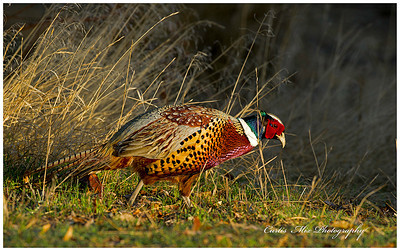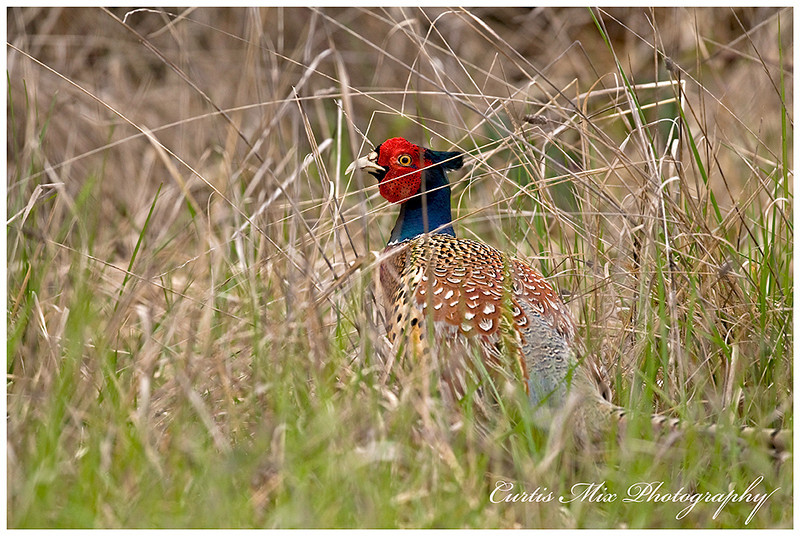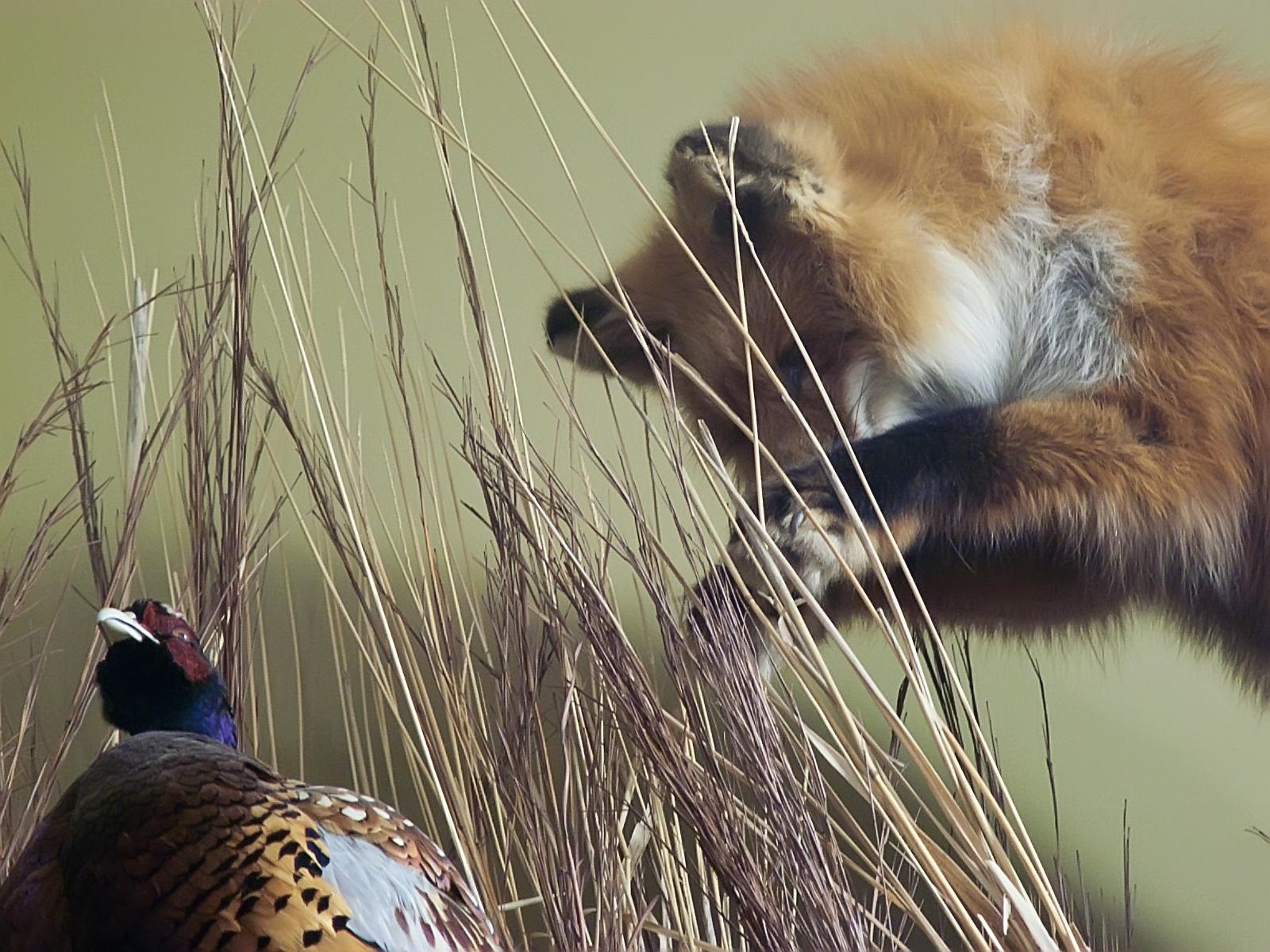Interactions
The ring-necked pheasant (Phasianus colchicus)
purposefully consumes food twice a day, once in the early morning and once
before sunset. Pheasants usually feed locally during the breeding season in
order to stay safe in a cock defended territory. However, in the winter
months, pheasants travel long distances in order to obtain food. The
ring-necked pheasant is an omnivore; it consumes a wide-variety of plants,
insects, and small arthropods. Still, the pheasant eats whatever is easily
obtained. Pheasants use their feet and beak to scratch the surface of the
ground and pull food off of plants. Agricultural crops such as corn, wheat,
barley, and flax make up a large portion of the pheasant’s diet. Pheasants
also feed on weed seeds such as ragweed and sunflower seeds and fruits such
as wild grapes,
apples, and blackberries. The ring-necked pheasant also
captures and eats
grasshoppers,
beetles, caterpillars, and
snails.
The
ring-necked pheasant is an omnivore; it consumes a wide-variety of plants,
insects, and small arthropods. Still, the pheasant eats whatever is easily
obtained. Pheasants use their feet and beak to scratch the surface of the
ground and pull food off of plants. Agricultural crops such as corn, wheat,
barley, and flax make up a large portion of the pheasant’s diet. Pheasants
also feed on weed seeds such as ragweed and sunflower seeds and fruits such
as wild grapes,
apples, and blackberries. The ring-necked pheasant also
captures and eats
grasshoppers,
beetles, caterpillars, and
snails.
 The ring-necked pheasant shares similar niches
with many other native species without harm. However, the native prairie
chicken has been negatively affected by the behavior of the ring-necked
pheasants. This behavior includes aggression of the male ring-necked
pheasants (called lek mating) against the prairie chicken male. Many studies
have been done to determine the reasoning behind this behavior; one
hypothesis is that the ring-necked cocks
The ring-necked pheasant shares similar niches
with many other native species without harm. However, the native prairie
chicken has been negatively affected by the behavior of the ring-necked
pheasants. This behavior includes aggression of the male ring-necked
pheasants (called lek mating) against the prairie chicken male. Many studies
have been done to determine the reasoning behind this behavior; one
hypothesis is that the ring-necked cocks mistake the prairie chicken for a female pheasant and are competing
in order to mate (Holt et al. 2010). Other species interactions include the predation
of the ring-necked pheasant. Being lower on the food chain, the ring-neck
pheasant has to avoid numerous predators. Again, this is why the presence of
habitat is so important for the survival of the ring-necked pheasant.
Multiple studies have found that the ring-necked pheasant is primarily
preyed on by the red fox(Vulpes
vulpes) (Frey et al. 2003, Smith et al. 1997). Other
predators include the skunk, raccoons and the domesticated dog and
cat.
Humans also pose as a predator to pheasants, as a wild game bird; hunters
travel the country in order to harvest their share of the beautiful and
delicious ring-necked pheasant.
mistake the prairie chicken for a female pheasant and are competing
in order to mate (Holt et al. 2010). Other species interactions include the predation
of the ring-necked pheasant. Being lower on the food chain, the ring-neck
pheasant has to avoid numerous predators. Again, this is why the presence of
habitat is so important for the survival of the ring-necked pheasant.
Multiple studies have found that the ring-necked pheasant is primarily
preyed on by the red fox(Vulpes
vulpes) (Frey et al. 2003, Smith et al. 1997). Other
predators include the skunk, raccoons and the domesticated dog and
cat.
Humans also pose as a predator to pheasants, as a wild game bird; hunters
travel the country in order to harvest their share of the beautiful and
delicious ring-necked pheasant.
You can't be done yet! To see some quick Pheasant "Phacts" click here.
